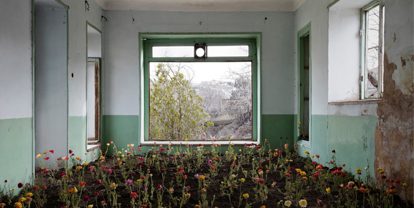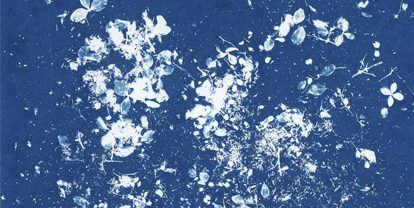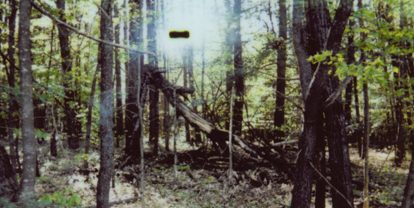Home
Gohar Dashti
December 15, 2017 — January 05, 2018
One can look at Gohar Dashti’s recent series and assume that they are completely separate from each other, but deep down they are connected by essential questions about the relation between human and nature as home and how today, in many countries, the idea of nature is intertwined with the sociopolitical issues.
Home, as represented in Gohar Dashti’s recent series, is an important place for privacy, sociability, and sensual connections to nature, all of which can be understood as negotiations and practices addressing the social and environmental paradoxes of our contemporary life.
With regard to Dashti’s previous series: “Stateless” (2014-2015) and “Iran, Untitled” (2013), it is not hard to comprehend the staged photographs of “Home” series. Homeland, previously depicted with the presence of individuals or groups of people, is now represented with abandoned domestic landscapes, now occupied with flowers, trees, and herbage. Fictionalize similar stories, Gohar Dashti’s “Home” series and Citelli and Bretzel’s “Capsula Mundi,” aim to replace people with plants, one in abandoned indistinctive places and the other one in cemeteries.
In her series “Still Life,” in which Dashti is doing abstract photography for the first time, the missing part is not only human figure but our ideal image of nature. There are also a momentous change in the process of taking photos by trying lensless photography: photograms and cyanotypes. The distorted, crushed, scattered natural elements; pine needles, twigs, leaves, and seeds—popular subjects of cyanotype sunprints— photographed through traditional photographic methods are then metamorphosized to large-scale digital prints.
In contrast to Dashti’s large-scale pieces from “Home” and “Still Life,” there are the small instant film pieces from her series “Alien.” Created during the artist’s recent residency at MacDowell Colony, she has taken photos from the surrounding wooded areas with an interest in exploring the relationship between herself and nature, how she can be present both in nature and in every single frame. Photos of this series are all taken through a sheet of glass that causes the flash of her camera reproduce a small reflection in each photo: a phenomenon that serves as a sign of an outsider in an unfamiliar context far from her homeland.


